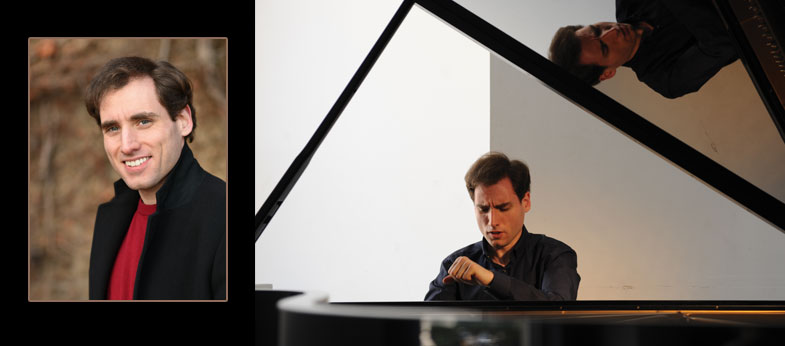

About
Performances at Carnegie Hall, BBC Proms, concerts throughout Europe, South America and China, Queen Elisabeth Competition (Brussels) first prize, soloist with distinguished orchestras and conductors. The honors and accolades flood in. Simply put, Boris Giltburg “is a staggeringly brilliant soloist.”
Born in Moscow and raised in Israel, Giltburg’s interpretive skills thrill and transport his listeners. His first prize in the 2013 Queen Elisabeth Competition (Brussels) catapulted his already accelerating career. In 2015 Naxos Records signed him to a long-term, wide-ranging recording plan. His recordings have already received lavish praise from Gramophone, NPR, and BBC Music Magazine.
Gramophone (May 2016), for example, called Giltburg, “among the truly memorable Rachmaninov interpreters, an elect including Moiseiwitsch, Horowitz, Kappel, Richter and Cliburn. His originality stems from a convergence of heart and mind, served by immaculate technique and motivated by a deep and abiding love for one of the 20th century’s greatest composer-pianists.”
Join us as he recreates the passion and musical enchantment of Beethoven’s “Moonlight Sonata,” Brahms’ “Fantasies” and Rachmaninov’s “Preludes, Op. 32.” Be sure to stay after the concert for a meet-and-greet with Mr. Giltburg, where you can snap a picture together, have CDs autographed or just say hello to a memorable artist.
Program
Program Notes
Written in 1801, the first movement of Beethoven’s Sonata, Opus 27 No. 2 was very popular in his day, exasperating the composer, who remarked to Czerny, “They are always talking about the C# minor Sonata- surely I’ve written better things.” Nearly 200 years later, it remains the most popular and downloaded piece of “classical” music. Beethoven’s title, “Sonata quasi una fantasia” signals that Sonata does not follow formal Classical Period sonata form, resembling instead a Fantasia, a free-form piece. The Sonata’s “official” unofficial title, “Moonlight Sonata,” came about in 1836, after Beethoven’s death. German music critic, Ludwig Rellstab wrote that the sonata reminded him of the reflected moonlight off Lake Lucerne. Composed at the beginning of Beethoven’s second stylistic period, this Sonata can be interpreted as his beginning to come to terms with his impending deafness. The Adagio Sostenuto’s mourning and loss, with its modal changes and dissonances followed by the rage of the stormy third movement, may express his feelings about this affliction – writing extraordinary music yet being unable to hear it.
The works of Brahms’ last decade have a decidedly autumnal quality, which is particularly evident in Opp. 116-119. Brahms seems to have exchanged the expansiveness and power of his earlier piano works, e.g., the great Handel Variations, early rhapsodies, and the piano sonatas, for a subtle, introspective poetry. A combination of three factors makes these works among the finest music written for piano: 1. Their introspection and concentrated, distilled poetic statements, especially relevant considering the loneliness and detachment Brahms struggled with in his last years. 2. The attention to detail, as in the refined counterpoint, which is to some extent is hidden beneath a lyrical surface. 3. Their pianism. Brahms is no longer interested in pushing boundaries, but instead explores the delicate inward-facing side of the piano’s expressive potential.
Rachmaninoff completed the thirteen Preludes, Opus 32 in 1910. They are representative of his later style, more subtle and harmonically advanced. They are also more complex and original in design than his Preludes Op. 23, and complete a full set of 24 preludes in all major and minor keys. The set opens with the robust Prelude in C major, full of flashy brilliance. The 10th Prelude is one of great introspection and searing spirit of self-revelation, The 12th Prelude is one of Rachmaninoff’s most lyrical. A haunting cello-like theme floats over a shimmering background. After a center section, full of rubato and passionate outburst, the shimmering returns and the Prelude ends with utmost ease on two single notes. The last of the Preludes is a solemn piece imbued with almost religious majesty, and recalls moments from earlier Preludes. The Preludes’ last two pages, with the magnificent theme ringing out like a cathedral bell tolling, end a Prelude set worthy not only to stand beside that of Chopin, but also to take an important place in the history of piano music.